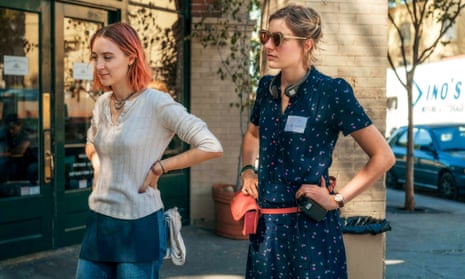Minority film directors remain overwhelmingly under-represented in Hollywood according to a new report from the Directors Guild of America.
The results of the annual study show that in 2017, just 16% of films were directed by women and only 10% came from film-makers of color, the latter statistic at the lowest it’s been since the DGA started reporting in 2013. The figures emerge in a year that saw notable successes for minority directors, including Jordan Peele’s Get Out and Greta Gerwig’s Lady Bird.
“It’s outrageous that we’re once again seeing such a lack of opportunity for women and people of color to direct feature films,” DGA president Thomas Schlamme said. “Our new study shows that discriminatory practices are still rampant across every corner of the feature film business. These numbers hit home how the chips are stacked against women and people of color.”
This year saw the DGA expand their typical data set to include films that earned less than $250,000 at the box office, encompassing 651 films with 691 directors. This subset was slightly better for female diversity with a 14% showing but with films that made more than $250,000, the number went down to 9%.
Ethnic diversity was at a new low for the study. Of the films that made over $250,000 at the box office in 2017, only 14 directors of color were involved, down from 21 in 2016.
The DGA has been pushing for implementation of the Rooney rule, named after former Pittsburgh Steelers owner Dan Rooney, which is an NFL policy that requires interviewing minority candidates for roles without involving set quotas.
“Change is long overdue,” said Schlamme. “Inclusion is a fight we’ve been fighting with the industry for four decades now, and it’s been an uphill battle to get them to change their hiring practices. In our two most recent negotiations, we pushed for the industry to adopt the Rooney Rule into their hiring practices, but they wouldn’t budge on the issue. Neither will we – we are committed to keeping at this for as long as it takes.”
The last few months have seen some announcements that suggest positive change in blockbuster film-making is taking place. In March, Ava DuVernay signed on to live-action comic book adaptation The New Gods, in April, Cathy Yan was named the first Asian female director to direct a DC property, taking on the Harley Quinn solo movie and this week saw the news that Marvel has a shortlist of female film-makers for their Black Widow film.
